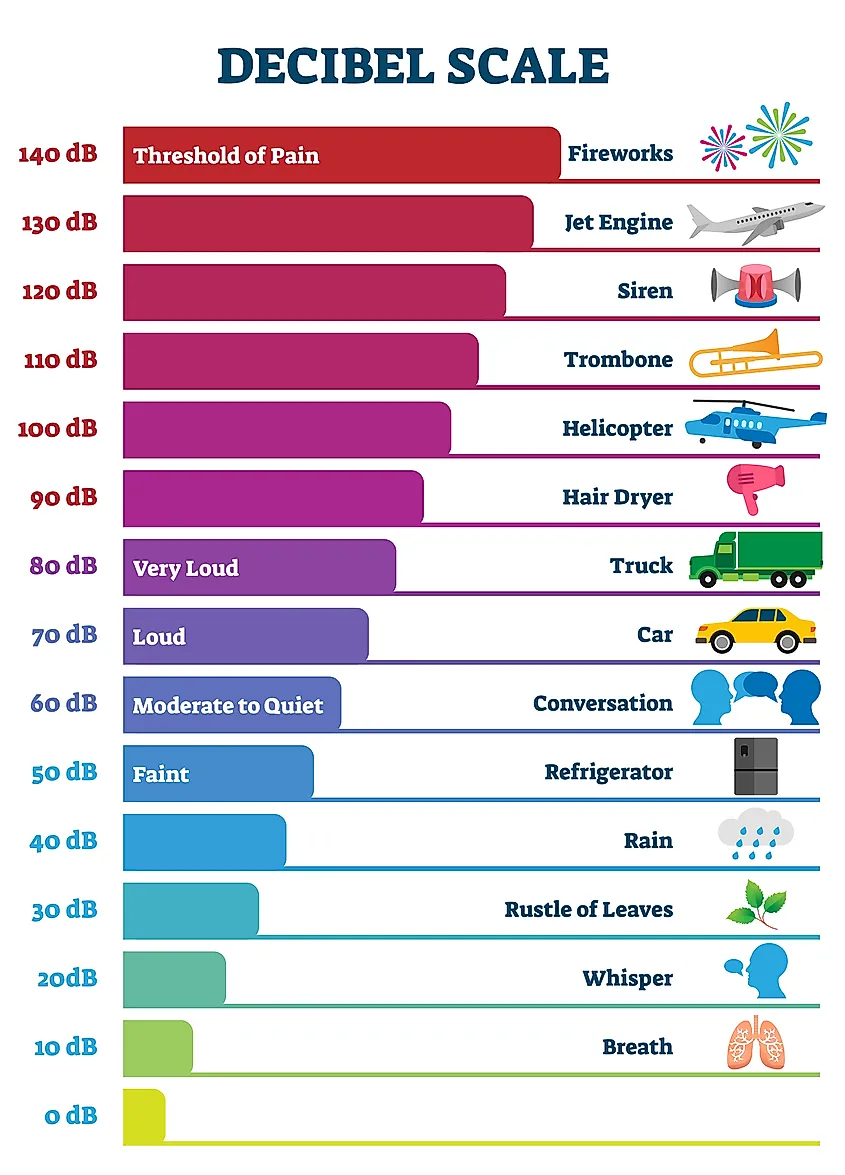

A good example is a factory with concrete floors, concrete walls, and metal ceilings present great surfaces for sound to bounce off of back into the factory. When sound (noise) is combined, the energy can bounce off surfaces and accumulate to increase the overall noise level. The different frequencies are actually different wavelengths-lower frequencies have longer wavelengths-higher frequencies have shorter wavelengths. Noise is almost always a combination of frequencies-each of which will require different methods to reduce the noise. Not so easy since we have to reduce or absorb one-half of the energy to get a reduction of 3 dB. In reducing noise by engineering means sounds easy to only have to reduce it by 3 dB. Noise energy is expressed on a Logarithmic scale 3 dB is a doubling the noise energy that is emitted. That by itself may be confusing because doubling the noise energy only increased the noise level by 3 decibels (dB). For example, two (2) machines side-by-side each producing noise of 88 decibels each when combined that is operating at the same frequency double the energy output resulting in a noise level of about 91 decibels. Remember that noise is energy and multiple sources compound the energy produced.

There is a vast assortment of possibilities depending upon the noise source and the amount of energy (in the form of noise) that is produced. That means some form of engineering control-design changes to the source or separation of a worker from the machine. The best protection is to eliminate excessive noise or isolate the individual from the noise source. The reason is simple, the poorest means of protection, whether to noise or other health hazards, is to utilize personal protection (in this case, hearing plugs or muff). Hearing protection alone is not an acceptable means of permanent OSHA compliance with the noise standard. The OSHA Noise Standard (29CFR1910.95) states when the 8-hour noise exposure exceeds 90 dB-A, an effort to control noise through engineering methods must be attempted if the 90 dB-A levels are exceeded. November 7, 2018, Updated December, 2019 Noise Exposure Levels
METHODS OF CONTROLLING NOISE POLLUTION FREE
If you need engineering control of noise testing assistance as discussed in this article call us at 97 or email us at for details and a free estimate.

Indoor Air Quality (IAQ) and Mold Experts.Industrial Hygienist – Temporary Staffing.Industrial Hygiene Surveys, Program Development, OSHA Compliance & Health Risk Assessments.


 0 kommentar(er)
0 kommentar(er)
